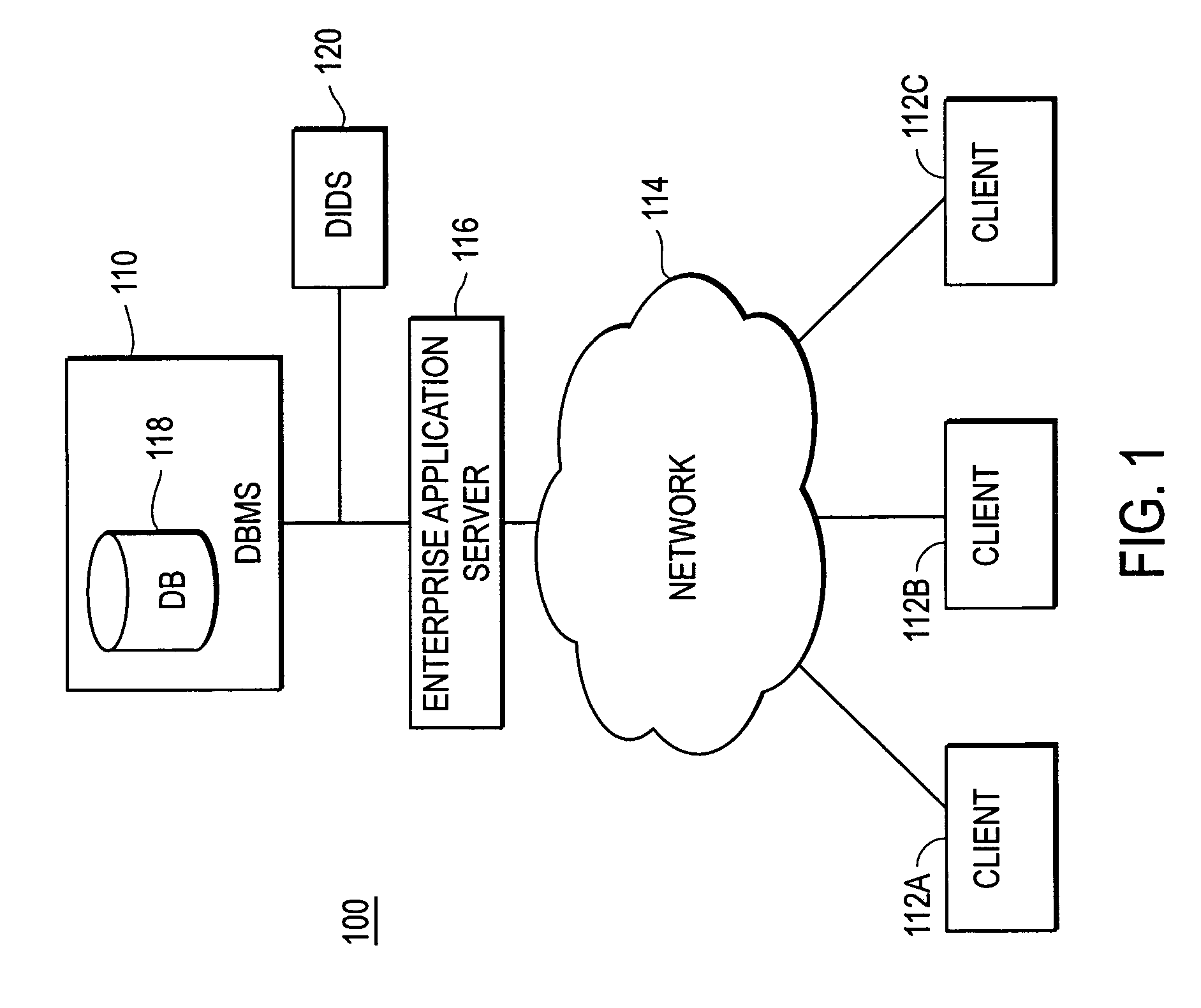Filtering training data for machine learning
a filtering and training data technology, applied in the field of computerized machine learning, can solve problems such as latent anomalies, and achieve the effect of improving performance and machine learning
- Summary
- Abstract
- Description
- Claims
- Application Information
AI Technical Summary
Benefits of technology
Problems solved by technology
Method used
Image
Examples
Embodiment Construction
[0016]FIG. 1 is a high-level block diagram illustrating a view of a typical environment 100 where it is desirable to generate training data for machine learning. FIG. 1 specifically illustrates an environment 100 where machine learning is used to train a database intrusion detection system (DIDS) 120 to detect anomalous database queries. The illustrated environment 100 includes a database management system (DBMS) 110 in communication with multiple client computers 112 via a network 114. Only three client computers 112 are shown in FIG. 1 for purposes of clarity, but those of skill in the art will recognize that typical environments can have hundreds or thousands of client computers 112, and can also have multiple DBMSs 110. There can also be other computers connected to the network 114 beyond those shown in FIG. 1.
[0017]FIG. 1 and the other figures use like reference numerals to identify like elements. A letter after a reference numeral, such as “112A,” indicates that the text refer...
PUM
 Login to View More
Login to View More Abstract
Description
Claims
Application Information
 Login to View More
Login to View More - R&D
- Intellectual Property
- Life Sciences
- Materials
- Tech Scout
- Unparalleled Data Quality
- Higher Quality Content
- 60% Fewer Hallucinations
Browse by: Latest US Patents, China's latest patents, Technical Efficacy Thesaurus, Application Domain, Technology Topic, Popular Technical Reports.
© 2025 PatSnap. All rights reserved.Legal|Privacy policy|Modern Slavery Act Transparency Statement|Sitemap|About US| Contact US: help@patsnap.com



